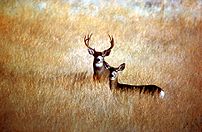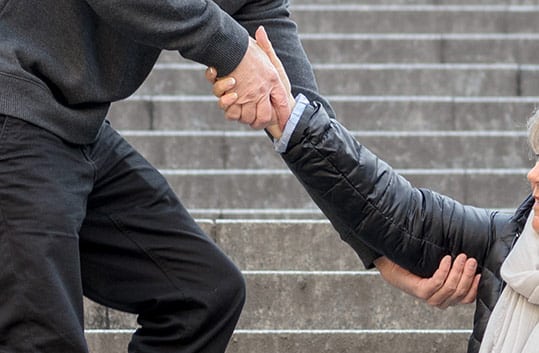 ‘Tis that time of year again. The cool crisp air, the leaves blowing in the wind, the early setting sun…. Autumn is almost over and Winter is on it’s way. This time of year brings two significant events both of which greatly increase your chances of a car collision with a deer– it’s deer mating season and deer hunting season. Both the mating season and the hunting season cause deer to be on the move much more than normal which means that deer are dangerously crossing roads much more than normal. Unfortunately, more deer/road crossings means more car/deer crashes.
‘Tis that time of year again. The cool crisp air, the leaves blowing in the wind, the early setting sun…. Autumn is almost over and Winter is on it’s way. This time of year brings two significant events both of which greatly increase your chances of a car collision with a deer– it’s deer mating season and deer hunting season. Both the mating season and the hunting season cause deer to be on the move much more than normal which means that deer are dangerously crossing roads much more than normal. Unfortunately, more deer/road crossings means more car/deer crashes.The consequences of deer collisions can be horrible– catastrophic injuries and death, totalled or badly damaged vehicles.
But deer collisions are NOT inevitable and there are some defensive driving steps you can (and should!) take to try to minimize the likelihood of hitting a deer with your car. Over the last 20+ years I have handled many personal injury and wrongful death cases involving collisions with deer and I have learned first-hand that many drivers do not take reasonable precautions to avoid deer accidents.
Heck, I have lived in Upstate New York for all of my 47 years (ugh!), I drive MANY miles every year in highly deer infested areas, and I have never hit a deer. Some would credit this with just good luck but I think it has less to do with good luck and everything to do with the fact that when my Dad, an avid hunter himself, taught me to drive, he pounded in to my thick teenage head, the need to drive defensively to avoid hitting a deer.
Below are a few simple tips that my Dad taught me that can greatly reduce your chances of hitting a deer.
DRIVING TIPS TO AVOID DEER COLLISIONS
1. SLOW DOWN— If you are in an area that is known to harbor a large deer population, SLOW DOWN. This sounds so simple but it is amazing the number of drivers who go the same speed even though they know that an area is known for a high number of deer. Come on folks….we all know that you can’t go the same speed when roads are snowy and icy because the road conditions make it dangerous to go the “usual” speed. The same is true for deer-infested areas. If you know you are in an area where deer frequently cross the road, slow down and watch out for deer crossings.
2. BE ON THE LOOKOUT— During the Fall and especially during hunting season, EXPECT to see more deer on the road. Expect to see them in unexpected areas. Expect to see them behaving in unusual ways. A buck in rut is blinded by lust and spends his days and nights chasing does for mating. This mating activity greatly increases the number of deer crossings. Likewise during the hunting season, deer are on the move trying to avoid the hunters in the woods. For defensive driving purposes, this means we KNOW we are facing greater hazard from deer collisions so it means that we need to be even more vigilant in watching out for deer.
3. IF YOU SEE ONE DEER, MORE WILL INEVITABLY FOLLOW— Another simple rule. However, it’s amazing the number of drivers who will see one deer at the side of the road and won’t slow down at all. Not smart. Deer, particularly doe’s, travel in packs, and during mating season those packs are often hotly pursued by one or more bucks. Knowing this, smart defensive drivers slow WAY down when they see a deer anywhere near a road.
I hope these tips help you safely navigate the high-risk deer season. Best of the season to you!
Thanks for reading,
Jim Reed
New York Accident Lawyer
jreed@zifflaw.com


